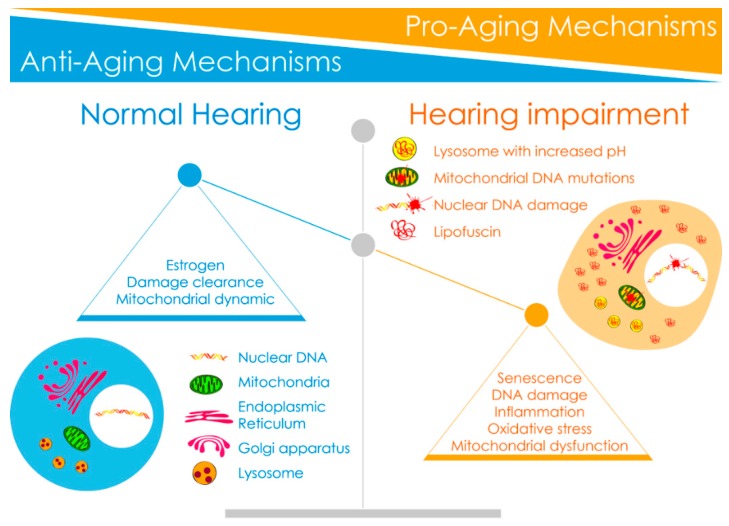Figure 3.
Imbalance between anti-aging and pro-aging mechanisms with age. The scheme drawing numerates several anti-aging and pro-aging mechanisms identified in the cochlear aging process. Anti-aging mechanisms include estrogen, autophagic damage clearance, and mitochondrial dynamic. Pro-aging mechanisms include oxidative stress, DNA damage, mitochondrial dysfunction, senescence-like phenotype, and senescence-associated inflammation. During the aging process, decreased activity of anti-aging molecules and increased activity of pro-aging properties might lead to accumulation of mutations in mitochondrial DNA, increased lysosomal pH with a resulting accumulation of lipofuscin and aggregates, and nuclear DNA damage, leading to cochlear cell degeneration and age-related hearing loss.

